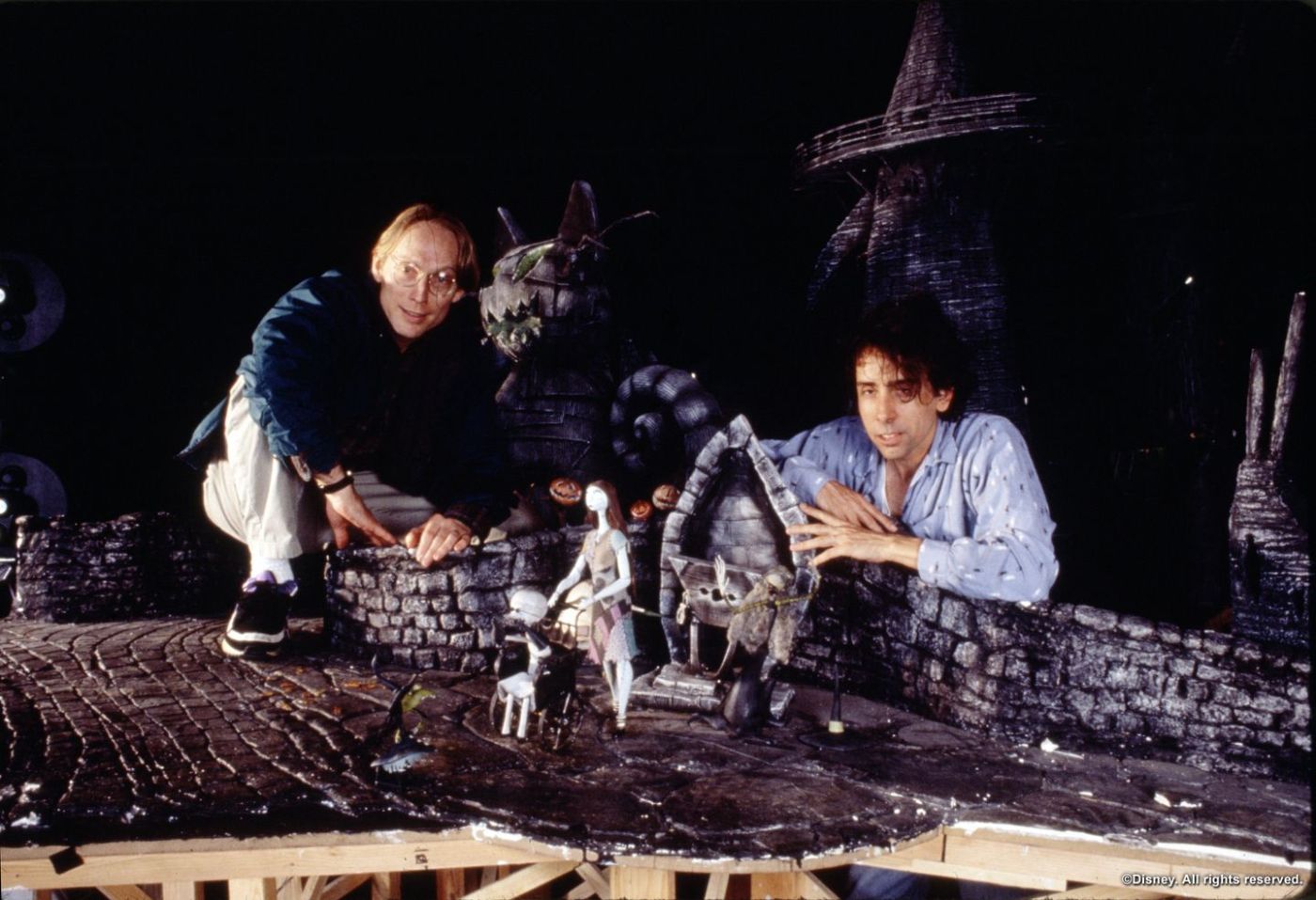Written for The Hollywood Reporter: My interview with THE NIGHTMARE BEFORE CHRISTMAS director Henry Selick for the 25th anniversary of the Disney double-holiday classic’s release.
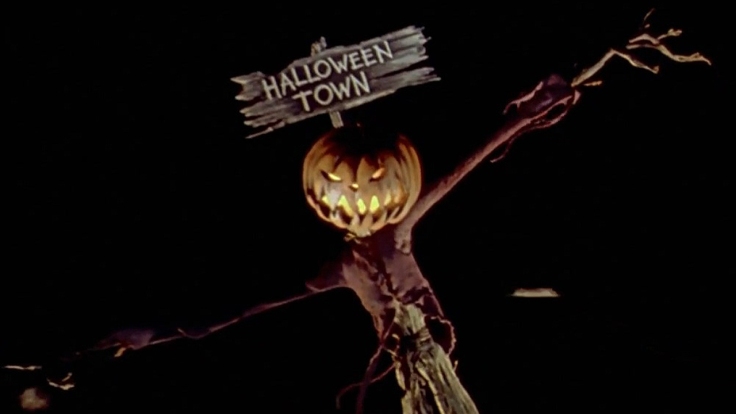
‘Nightmare Before Christmas’ Director on the Tim Burton Joke He Had to Cut
Henry Selick looks back 25 years after his hit and recalls why filming began without a script.
Twenty-five years ago, it was hardly a sure thing that Tim Burton’s The Nightmare Before Christmas would go on to become a cultural touchstone and earn $50 million in its initial run. When cameras began rolling on the film in summer 1991, stop-motion director Henry Selick and his crew faced a nerve-wracking obstacle that could trip up even the most seasoned of filmmakers: no screenplay.
“We had to start production without a script, which is insane,” Selick tells The Hollywood Reporter about the movie, which was released 25 years ago this month. “We didn’t really know what we were doing, but we had total confidence and we had a huge amount of fun.”
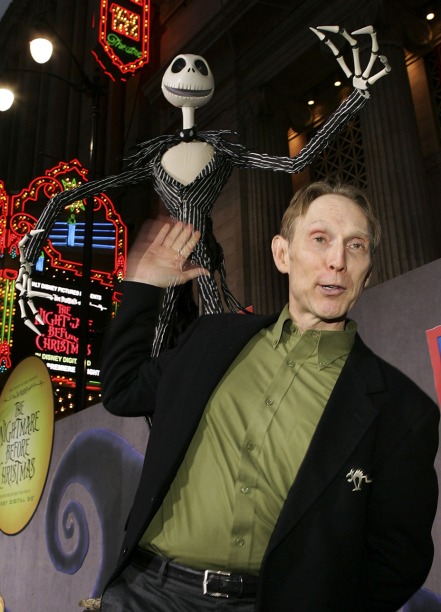
Henry Selick in front of Jack Skellington.
Guided by producer Tim Burton’s mad-genius vision and composer Danny Elfman’s whimsical, original songs as a roadmap, Selick assembled a trusted, tight-knit team of experienced character designers, animators, miniature set builders, puppet fabricators/costumers and intensely creative minds.
“We knew the story well. The first songs came in, and we basically just blindly, but very confidently, went into production,” he says.
During production, some elements fell by the wayside. One particular moment that was left on the cutting room floor had to do with a puppet version of Burton.
“There’s a shot — and I really regret replacing it — at the very end of the film when Jack comes back and then Sandy Claws flies overhead and there’s snow and Christmas comes to Halloween Town. We show a lot of Halloween Towners enjoying winter sports and snow, and you see the vampires playing hockey and they hit the puck right at the camera — and originally it was Tim Burton’s head,” says Selick. “And it was really funny. And Denise Di Novi or one of the Hollywood producers told me, ‘I don’t think Tim’s going to like that.’ And I feel so stupid for not just asking him. But that’s one of the shots that we reshot and we put in a pumpkin instead. I don’t know if that shot still exists, but I’d love to replace the one in there and I’m sure Tim would love it.”
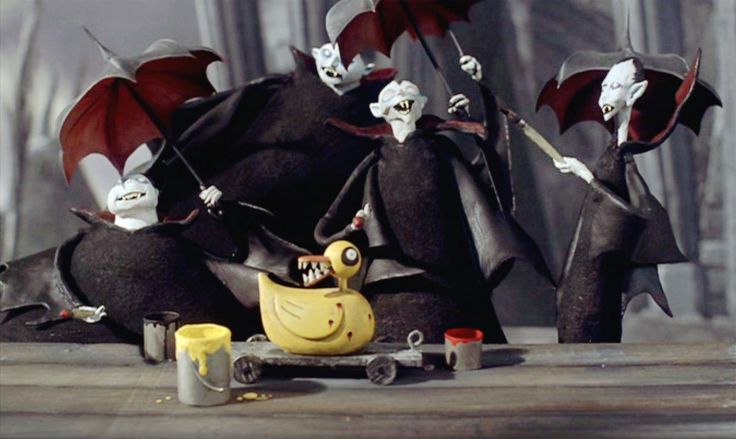
Inspired in part by The Night Before Christmas and How the Grinch Stole Christmas, Burton’s mashup of the works of Clement Clarke Moore and Dr. Seuss had been simmering in his brain for years. Burton’s 1982 stop-motion short Vincentwas the first stylistic building block toward Nightmare, realized with the help of Rick Heinrichs, the first to take Burton’s sketches and sculpt them into three-dimensional characters. The buzz on that early film encouraged Burton to pitch ideas to Disney, and Nightmare came to the forefront.
“That really got Tim going into stop-motion,” recalls Selick. “He came up with this great idea for this madman taking over Christmas thinking he could do a better job and did just a few sketches. There was really only Jack and his dog Zero and Sandy Claws, and Rick did beautiful sculptures of those characters.”
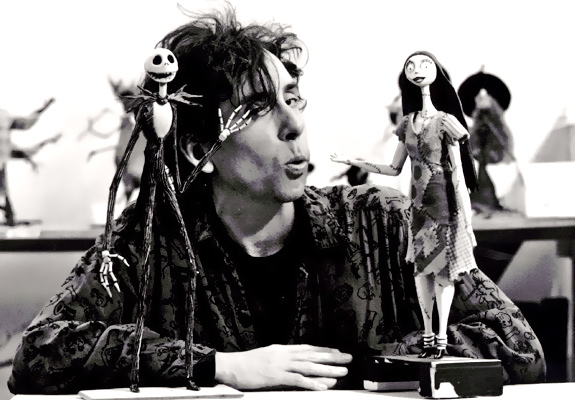
Nightmare was pitched to Disney as a TV special in the early 1980s, but the studio executives passed on it, declaring that the film’s style didn’t fit with their slate, which was almost comically at odds with Burton’s and Selick’s artistic sensibilities. Both former CalArts students, the duo had struck up a friendship after meeting at a nighttime drawing class and commiserating in the trenches of the Disney animation department. “We liked a lot of the same things like Charles Addams and Edward Gorey and monster movies and Harryhausen,” says Selick. “But we were working on things at Disney like trying to draw cute foxes for The Fox and the Hound.”
Burton eventually left Disney to pursue feature-length projects. When he got his shot to direct Pee-Wee’s Big Adventure (1985), he invited Selick to do a title sequence featuring stop-motion work, but a tight budget ultimately prevented its fruition. Still, Big Adventure was a solid hit at the box office, and Burton followed up with another winner, 1988’s Beetlejuice (1988). Then came Batman. Burton’s 1989 take on the DC superhero proved to be a grand slam for Warner Bros. and a massive genre game-changer within the cinematic landscape. Burton became a top-tier director, and after Edward Scissorhands (1990) made $56 million domestically for 20th Century Fox, cementing his signature dark-and-quirky style as a box-office draw, Disney wanted to lure the A-list filmmaker back into the fold. As Burton was prepping Batman Returns for Warner Bros., Selick was back in his orbit: “Nightmare was a gift to Tim to come back, and they hoped he’d do films as successful as Batman,” says Selick.
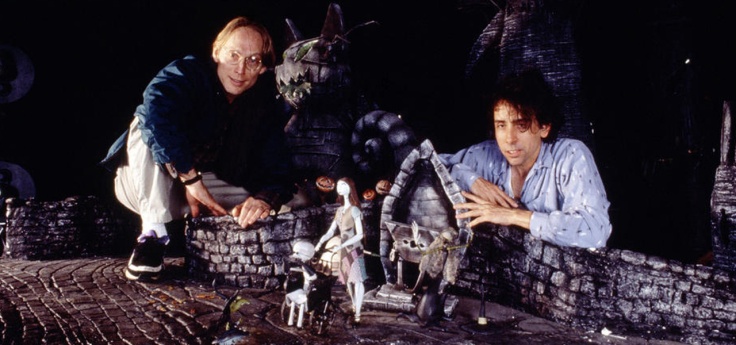
But with so many projects on his plate, Burton was too busy to actually direct Nightmare, and Selick became his obvious choice. By that point, the Bay Area native had done several commercials that incorporated stop-motion characters, such as the Pillsbury Doughboy, as well as original material for MTV that allowed him to hone his craft and build a talented core team.
“[Tim and I] reconnected, and he told me Danny Elfman was going to write some songs and there was going to be a script by Michael McDowell who had done Beetlejuice,” he says. An animation test was filmed at Phil Tippett’s studio in Berkeley focusing on Jack Skellington in a graveyard after his sled is shot down, and the magic created in that first glimpse earned the feature its greenlight. “And then we were off to the races.”
Though Burton wanted to shoot Nightmare close to home in Los Angeles, Selick felt “we’d do better if we had some distance from Disney and the project” and established Skellington Productions in an unmarked warehouse in San Francisco. He also lobbied for an additional year of filming time to get it right and incredibly got his wish. As production ramped up, McDowell’s screenplay ”was kind of tossed out” and Scissorhands writer Caroline Thompson was recruited to update the story and “stitch together” Elfman’s 10 tunes and reprise, Selick recalls. Although Elfman would sing as Jack, it was determined that his voice was simply not polished enough to pull off the dialogue and actor Chris Sarandon stepped in.
“He gave Jack a little more charm and warmth that helped enormously,” says Selick. “Jack Skellington, he’s a complicated guy. He’s mercurial, he convinces himself of crazy things and he could be kind of likable.”
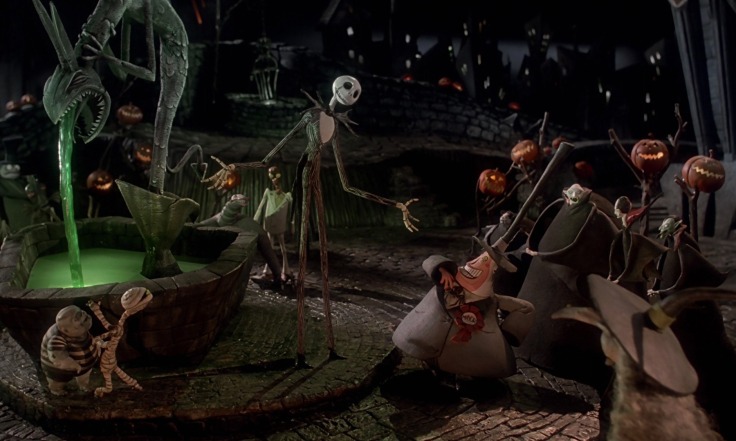
Nightmare’s opening tune, “This Is Halloween,” essentially introduces the entire cast of Halloween Town. By shooting that sequence first, it tidily avoided a number of the dilemmas normally associated with filming without a script because the lion’s share of characters (short of Santa Claus; Oogie Boogie; and the troublemaking trio of Lock, Shock, and Barrell) and exteriors were required — and the first to be checked off the production’s to-do list.
“My job as the director is to help supervise the building of all these jigsaw puzzle pieces that, when put together, it has to feel like one continuous flow,” says Selick. “You can have 20 stages going at once with animators and lighting and set dressers on them, and you’re moving one stage to the next doing what you have to do as a director. Stop-motion is so much like live action in terms of real lights, real sets and hair and all this stuff, except it’s in miniature and it’s in slow motion. It’s a crazy way to make movies, but I and a handful of other people love doing it and it’s what we’ve become proficient at.”
Busy with his other projects, Burton took a hands-off approach to the production once it was underway, checking in personally only intermittently and following the progression of dailies. As more of Elfman’s songs began to flow in, Selick became concerned that perhaps there might be too many. “I was telling Tim, ‘People aren’t used to this many songs in an animated film. I’m worried that that’s going to lose some of the audience.’”
Though most animated musicals only have an average of about five or six tunes, Burton decided to animate all 10 and the reprise, retaining the option of cutting a song or two if it felt like too much.
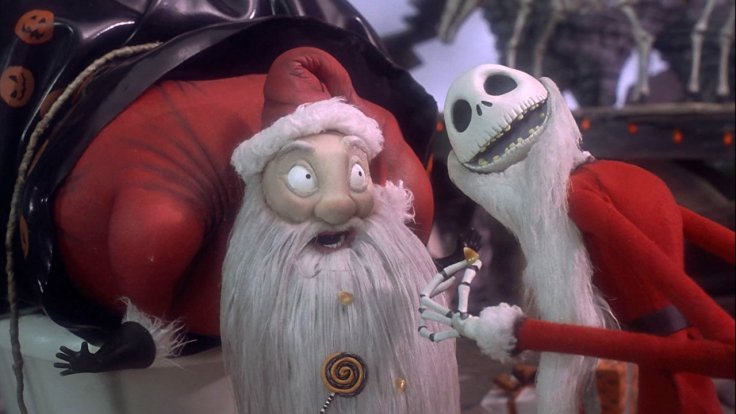
“So we finish the film, and they do their trims, and then he comes to me and says, ‘You know, Henry, I think you’re right, we’ve got too many songs. We’ve got to cut one or two.’ There weren’t many times I could really go to Tim and say, ‘No, we’re not going to,’ but that was the time. I said, ‘Tim, I’m convinced that every song has to stay because every song is so important to tell the emotional story of the film.’ And I convinced him that I hadn’t been right and we need to keep the songs,” recalls Selick. “They had become such an integral part of the film — character development, the emotional center and just basic storytelling — that I felt there would be a huge hole that would leave confusion. And also the running time — the movie was a very short feature, like 74 minutes, and I felt it just wasn’t going to be long enough.”
Since Jack is in almost every scene, every animator was going to have to work on him at one point or another. To maintain consistency, Selick acted out a lot of the spindly lead’s movements and gestures himself.
“Virtually every pose in the final scenes, I worked it out with the animator Tim Hittle, or when Jack is dancing on the horse and bursts in flames, I worked that out with Paul Berry. Jack had to be consistent, fun to watch,” says Sellick.
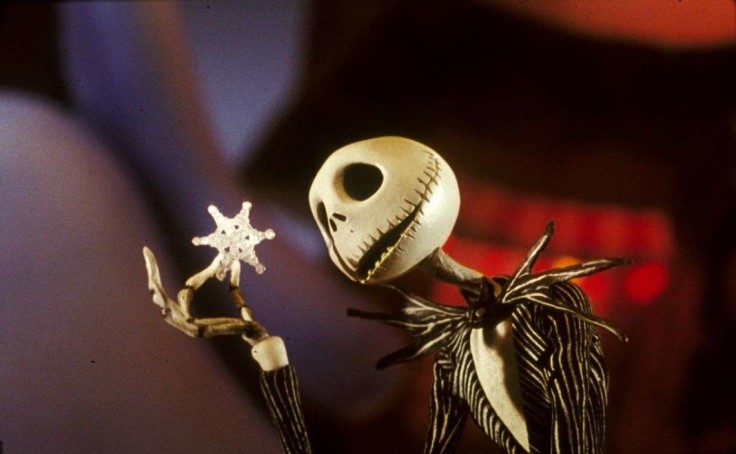
He notes that crafting Sally, voiced by Catherine O’Hara, was a challenge.
“Sally was difficult. We only had one full-time woman animator on the show,” says the director. “They were kind of rare; Angie Glocka did some beautiful work. But the strongest Sally animator was this guy called Trey Thomas, who like rode a motorcycle, was unshaven, a heavy cigarette smoker, the most macho guy you could imagine, but he had this delicacy with Sally. So in that case it was more about casting the right animator to bring a rag doll to life.”

Not surprisingly, the malevolent Halloween Town villain Oogie Boogie proved to be the production’s biggest technical challenge.
“He was a bear of a puppet to move,” recalls Selick of the oversized ghoul. “He was much bigger, much heavier, the metal armature inside had to be really beefy. Oogie was a wrestling match. … It was the most taxing, draining character to give him some sense of fluidity, keep him big, have him be fun, and then, of course, when the threads are pulled from his burlap sack of skin and all the bugs are revealed, that was a pretty nightmarish shot. Mike Belzer did that one and it almost killed him, but we were all very happy with the result.”
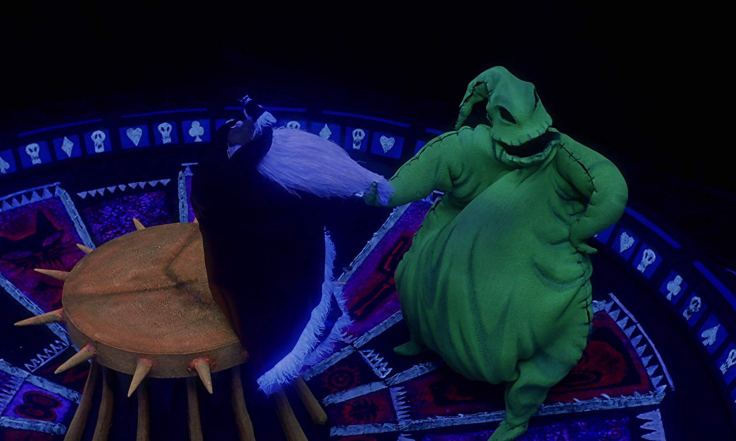
Interestingly, despite having a ticking clock and multiple deadlines looming over a very slow and meticulous process, Selick and his team of animators often found room for improvisation and creative surprises.
“There’s always one main thing that has to happen in the shot, and as long as that gets conveyed first in the storyboards and then by the animator, you’re probably going to be in good shape,” he explains. “They’re never following a totally rigid plan. They’ve got to hit the beats if it’s a song, they have to make the mouths move in sync with what’s recorded. Those are the things they’re locked in to. But all the rest, there’s room to interpret.”
The team did what they called a “pose-through” after getting the puppets on set.
“You’re just doing the basic poses and you’re not moving in every frame. You might put 10 frames or 15 if there’s a camera move, and then the next phase you want to shoot a rehearsal: The camera will have been refined, the lights will have been refined, set dressing will have been refined, and then in that rehearsal, that’s the chance for the animator to try out some things and very roughly but still strongly suggest [the character’s motion],” he says. “And then finally after the rehearsal, you make notes and adjustments and you shoot the final. And 99 times out of 100 the final was the final. We reshot hardly any shots in the whole film. But through that process you get to focus in and you do get to experiment.”
Given the challenges of crafting a family film that revolves around the spookier creatures of the Halloween season, Selick admits that he thought a lot about character designs that may have gone a step too far.
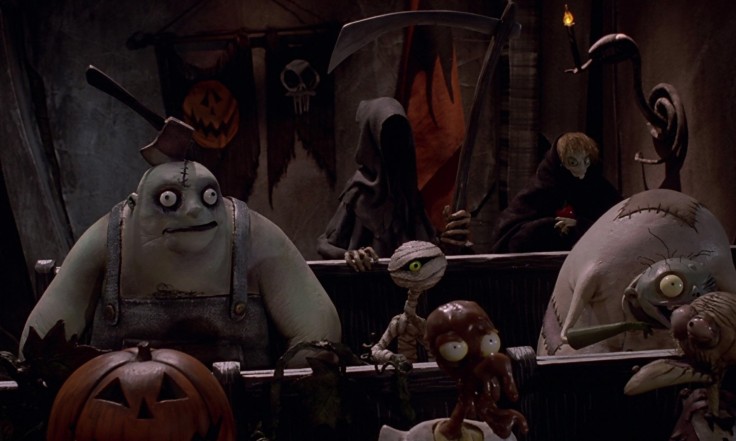
“You live with something and you develop a sense of what’s right and what’s not,” he explains. “For example, in the song ‘This is Halloween,’ where all the characters are introducing themselves to the audience, [you have the lyric], ‘I am the clown with the tearaway face.’ Originally it was pretty disgusting. He would tear his face away and it was like flesh and blood underneath. We didn’t shoot that, but it was in the storyboards and I just knew that that was kind of grotesque. It suddenly became like a horror film, like Halloween or something John Carpenter.”
The team opted for a less gruesome idea.
“We self-edited that and just made it an empty space,” he says. “When Sally’s arm is torn off when she’s trying to escape the evil scientist at the end of that song, I spent a long time trying to figure out, ‘Well what’s inside of her?’ Because she’s a Frankenstein doll, but that can be kind of disgusting. And I just ended up thinking, ‘Well, autumn leaves, kind of brown with just a little bit of color.’ I just felt that will be kind of fun and unexpected that that’s what she’s stuffed with. But there’s not much else besides those two things where we had to self-edit.”
Now 25 years later, Selick reflects on the film’s enduring success: “I’m so happy that we got to make it and that it’s had this life. [It was this] initial small success, it made double its money, and they made a few toys and it went away. And then it slowly became this other thing. Ultimately, they’ve made well over a billion dollars in merchandising. So it’s actually done very well for Disney financially, but for me I’m just so happy that we got to make it and that it’s lived on.”
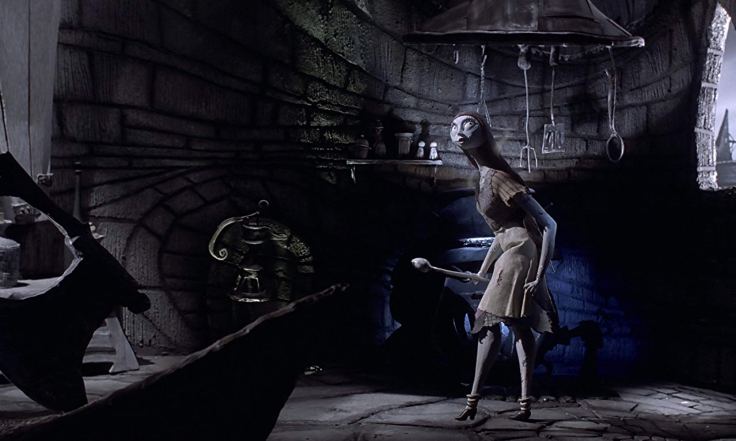
It’s worth noting that the inevitable talk of sequels has circled the project over the years, but none of it has been taken very seriously by Selick or Burton.
“I was approached several times as a conduit to Tim, but often times I was told, ‘Well, you know, it can’t be stop-motion. It would have to be CG now because that’s what everyone wants.’ And I said, ‘Well, I’m not even going to go to Tim, because I know neither of us would do that.’ Why would you change the technology to keep up with the times?” he asks. “The thing about stop-motion is it’s so old-fashioned it can’t age because it’s already old. I think good stop-motion has a very, very long shelf life.”
Now with several other memorable stop-motion entries under his belt, including critical darlings Coraline and James and the Giant Peach, Selick is working on Wendell and Wild, a stop-motion film collaboration with Keegan-Michael Key and Jordan Peele for Netflix. But if a follow-up Nightmare Before Christmas script came across his desk that was just perfect and could be stop-motion animated, Selick thinks he might be game to revisit the denizens of Halloween Town.
“It would have to be a very different story: A prequel, a sequel well into future or who knows — the old tell-it-from-the-villain’s-point-of-view type of tale,” he muses. “I’d never be totally against it if somebody had a way to make it fresh and new and not like a lot of sequels, which are basically just doing the first film with a few slight adjustments. There’s no such thing as ‘It’s impossible,’ but it doesn’t feel like it’s worth putting in the effort to try to find that magic key to open it again. But if someone did it, I certainly want to see their story idea.”
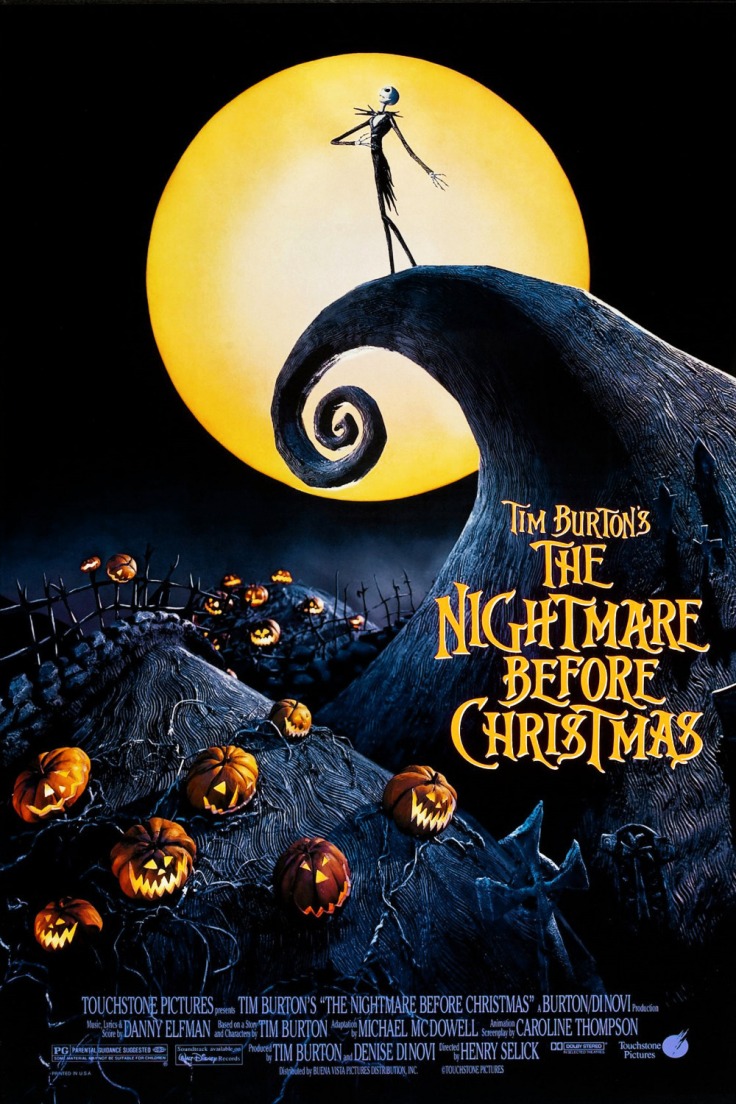
###
You made it to the end of the piece! Jack Skellington would be proud. Now, please take a moment to “like” IT CAME FROM… on Facebook and “follow” on Instagram and on Twitter and/or Tumblr for more great retro content.
Then, check out more of my celebrity and filmmaker interviews HERE.
____________________________________________________________________________________
YOU CAN HELP IT CAME FROM BLOG“KEEP THE LIGHTS ON” WITH BUY ME A COFFEE. Thanks!

